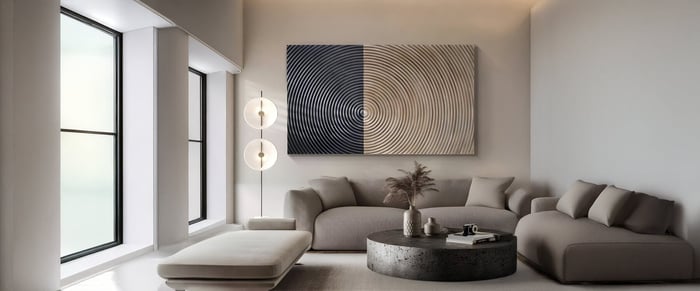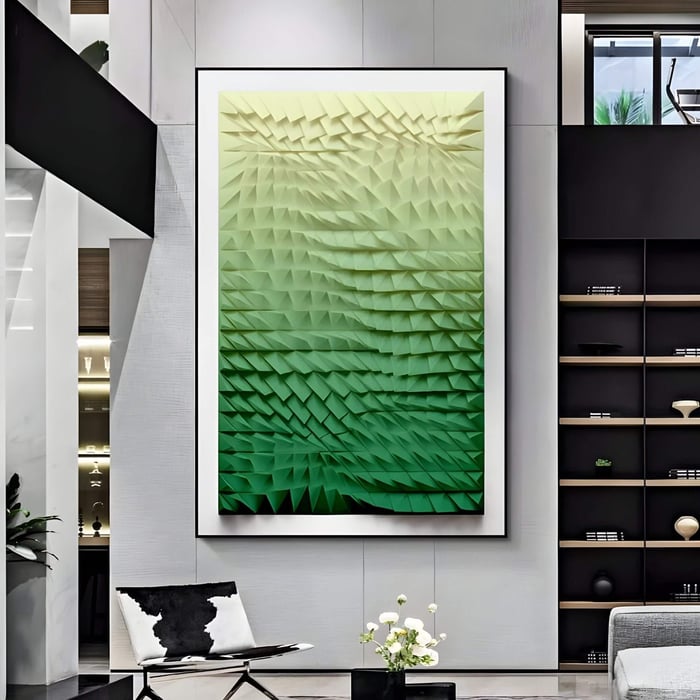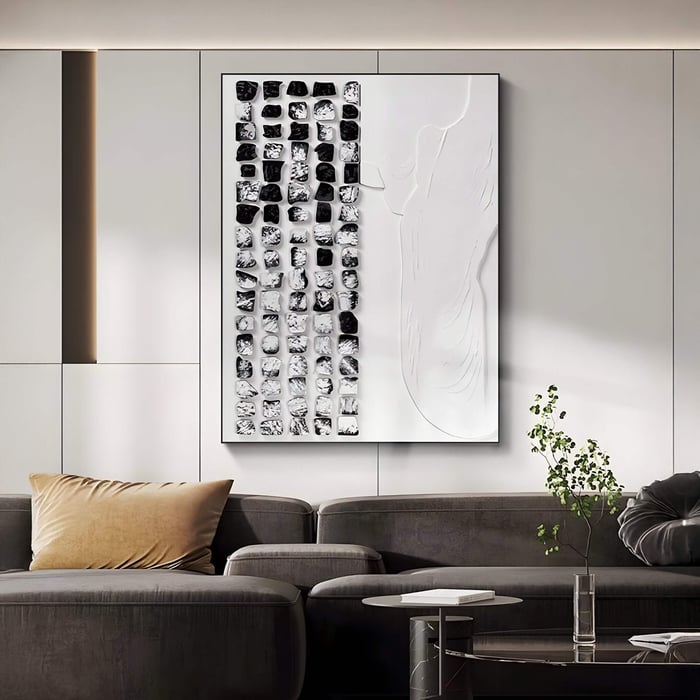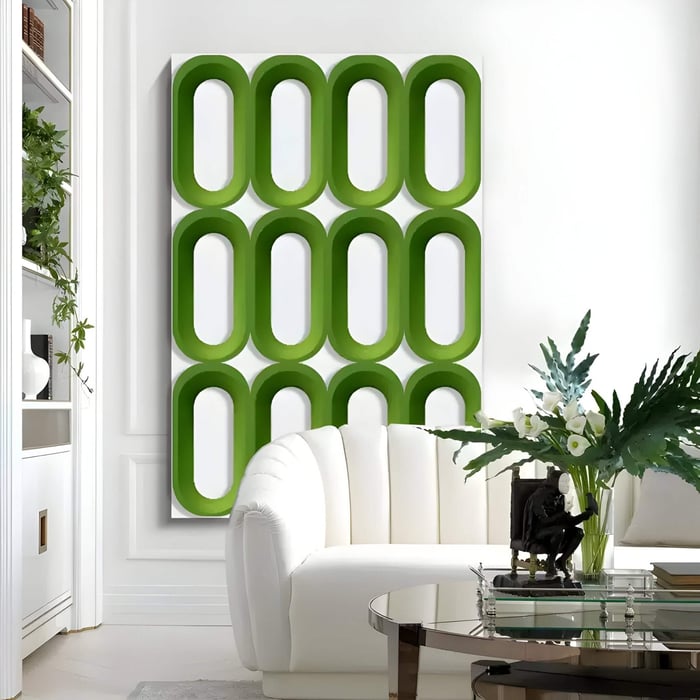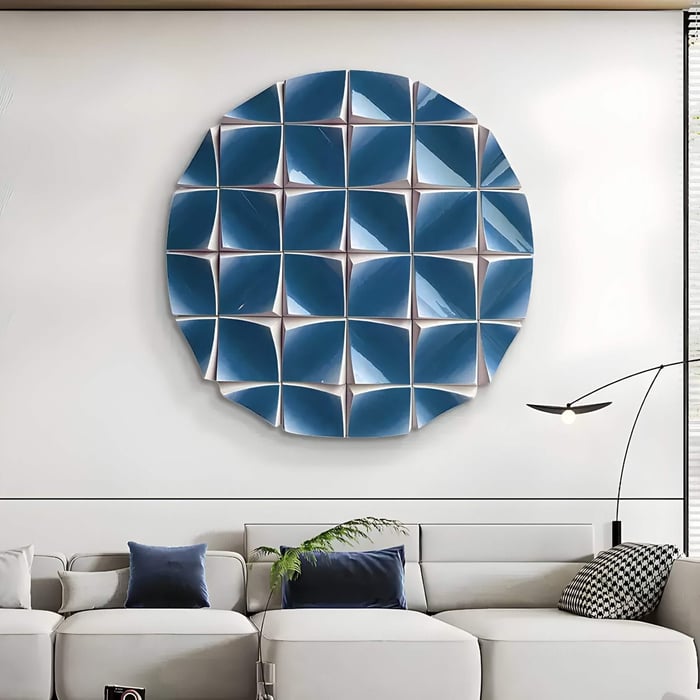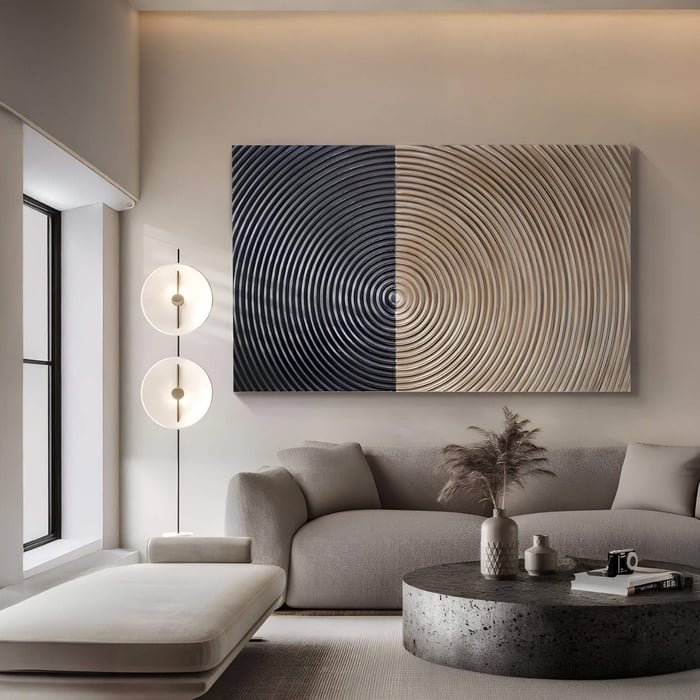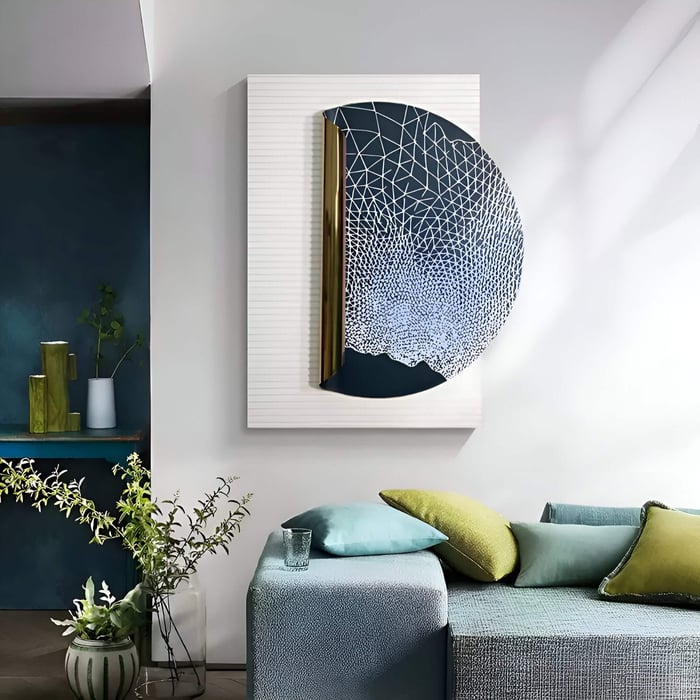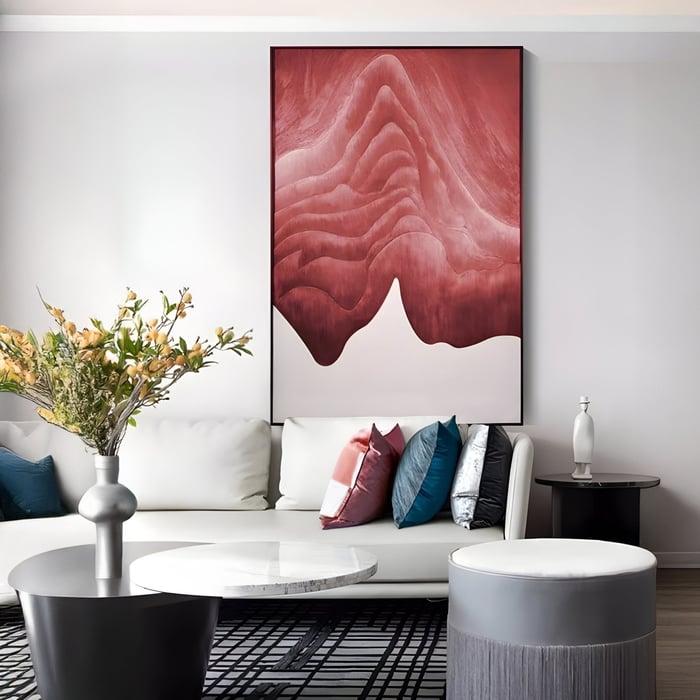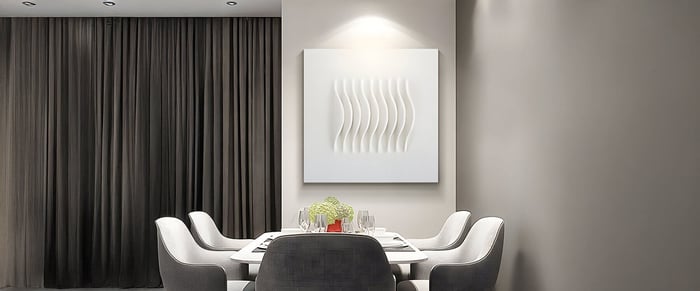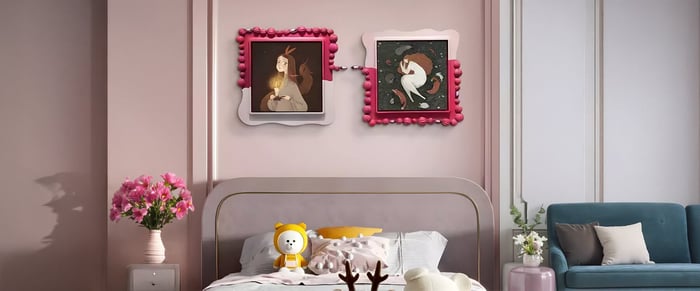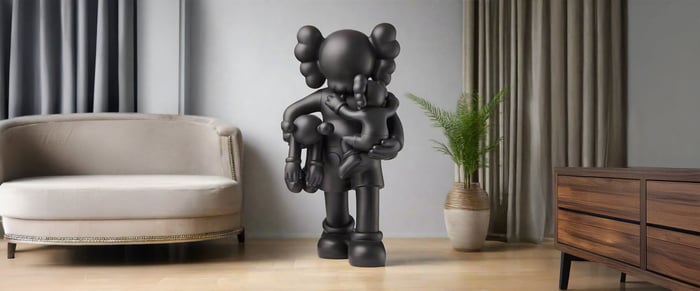Living room art plays a crucial role in defining the atmosphere and personality of your home’s most social space. It can pull a space together, spark conversation, and reflect your personality more than any furniture ever could. But with so many options out there, it can be tricky to figure out what works best, and where to begin.
This FAQ-style guide tackles the most common questions people ask when choosing, styling, and placing living room art. Whether you’re a minimalist looking for a clean visual anchor or someone who loves curated chaos, these practical answers will help you turn your living space into something both functional and personal.
Q1. How Do I Know What Art Style Fits My Living Room?
Start by reading your space. What’s the overall vibe? A minimalist room with neutral tones pairs well with organic art or simple abstract pieces. An industrial space might benefit from geometric art or bold modern canvases. Traditional homes often welcome landscape art or framed portraits.
Try matching your art style to the room’s design scheme:
Minimalist Rooms: Organic textures or monochrome abstract art.
Boho/Maximalist: Eclectic gallery walls, colourful abstract or floral pieces.
Industrial: Black-and-white photography or metallic geometric works.
Scandi/Modern Rustic: Neutral colour wall art, wooden frames, or nature-inspired minimalist pieces.
Look for living room art that complements your furniture’s material and colour. For example, soft furnishings pair well with textured or nature-inspired work, while glossy surfaces work with crisp, clean-lined art.
Q2. How Do I Choose the Right Art Pieces Without Playing It Too Safe?
Art should reflect you. Don’t be afraid to include pieces that surprise, amuse, or challenge. Start by identifying what you’re drawn to - organic textures, modern abstract wall art, typographic prints, or something quirky?
For balance:
Pick one bold piece and complement it with subtle supporting works.
Layer large canvas art with smaller framed pieces.
Use curated wall art services or local artists to find unique and personal options.
Mix media for depth, think a metal sculpture next to a soft abstract painting. If you’re still unsure, try framing a striking piece you’ve created or use a high-quality print that speaks to your taste.
Q3. What Size Should My Wall Art Be for My Living Room?
One of the biggest mistakes is going too small. Here’s a basic rule:
Art above a sofa or console should be about two-thirds the width of the furniture below it.
If you’ve got high ceilings, don’t be afraid to go vertical. For large walls, oversized canvas artworks makes a statement. For smaller or awkward areas, try grouped smaller pieces with consistent spacing for cohesion.
Scale is everything. Big pieces anchor a room; small ones fill visual gaps. Mix and match to create rhythm and flow.
Q4. How High Should I Hang My Living Room Wall Art?
A general rule: the centre of the artwork should be around 57–60 inches from the floor. This aligns with average eye level.
If hanging above furniture, aim for 15–25cm (6–10 inches) above the top of the sofa or sideboard. Avoid going too high, it disconnects the artwork from the room.
For gallery walls, start with the largest piece at eye level and build around it with a balanced arrangement.
Q5. Should I Create a Gallery Wall or Stick to One Large Piece?
Both have their place. Here’s when to choose which:
Gallery Wall: Ideal for narrow or large walls, or if you love mixing themes and frames. It’s perfect for showcasing collections and works well in eclectic or boho interiors.
One Large Piece: Creates a strong focal point. Works beautifully in minimal or modern spaces. Adds instant drama with less effort.
Tips for gallery walls:
Keep frame styles consistent (e.g., all black or all natural wood).
Maintain equal spacing between pieces.
Choose a theme - colour, subject, or style, to tie it all together.
Q6. What’s the Best Colour Palette for Living Room Art?
Your artwork should complement, not fight - your room's palette. Use a colour wheel to understand harmony and contrast.
Tonal Matching: Choose art that uses similar tones to your walls and furniture for a serene, cohesive look.
Contrast: Choose colours that pop against your walls to create visual energy.
Neutral colour wall art fits easily into most spaces. For warmer schemes (rust, terracotta), earthy-toned art works well. Cool tones like blues and greys benefit from black-and-white or muted artworks.
Q7. Can I Mix Different Art Styles in One Living Room?
Absolutely. Mixing styles adds depth and character. Combine geometric art with organic pieces or vintage photography with modern abstract art.
To avoid visual chaos:
Stick to a limited palette or tone.
Use similar frames to create consistency.
Anchor mixed styles with a central piece that bridges the aesthetic gap.
Don’t be afraid to experiment. Some of the best displays come from blending styles you wouldn’t expect to work together.
Q8. Should I Use Framed or Canvas Art in the Living Room?
It depends on your desired vibe:
Framed Art: Clean, classic, and great for structured or formal living rooms.
Canvas Art: Casual, textural, often better suited to relaxed or contemporary spaces.
Floating frames add a modern touch. Choose materials based on your decor - wood for warmth, metal for modernity.
Also consider light exposure. Glass frames can reflect glare, so matte canvas or anti-glare glass may work better in sunny rooms.
Q9. How Often Should I Update or Rotate My Living Room Art?
While there are no hard rules, rotating art seasonally or annually keeps the space feeling fresh.
Use modular hanging systems for easy swaps.
Keep art you’re not displaying in dry, cool storage.
Rotate based on themes or moods - florals in spring, moody abstracts in winter.
Updating doesn’t always mean replacing. Sometimes, just moving art from one room to another creates a brand-new feel.
Q10. What Are Some Final Tips to Make My Living Room Art Feel Cohesive?
Limit your palette: Choose 2–3 main colours that run through your art collection.
Repeat elements: Recurring shapes, tones, or subjects create visual rhythm.
Mind the lighting: Use spotlights or wall sconces to highlight key pieces.
Match scale to space: Larger rooms benefit from bold works; smaller ones shine with more intimate, delicate pieces.
Don’t rush. Let your wall art evolve over time, just like the rest of your home.
Conclusion: Art That Tells Your Story
Your living room art isn’t just decor. It’s a personal expression, a design anchor, and an evolving part of your home’s story.
Whether you’re hanging modern abstract wall art above a sleek sofa or building a vibrant gallery wall of curated pieces, let these FAQs guide you, but don’t let them limit you.
Explore your taste. Trust your eye. And remember, the best art is the one you enjoy every day.
Want help choosing pieces? Check out Giant Sculptures' curated collection of living room art, large canvases, geometric styles, organic art, and more.














































































